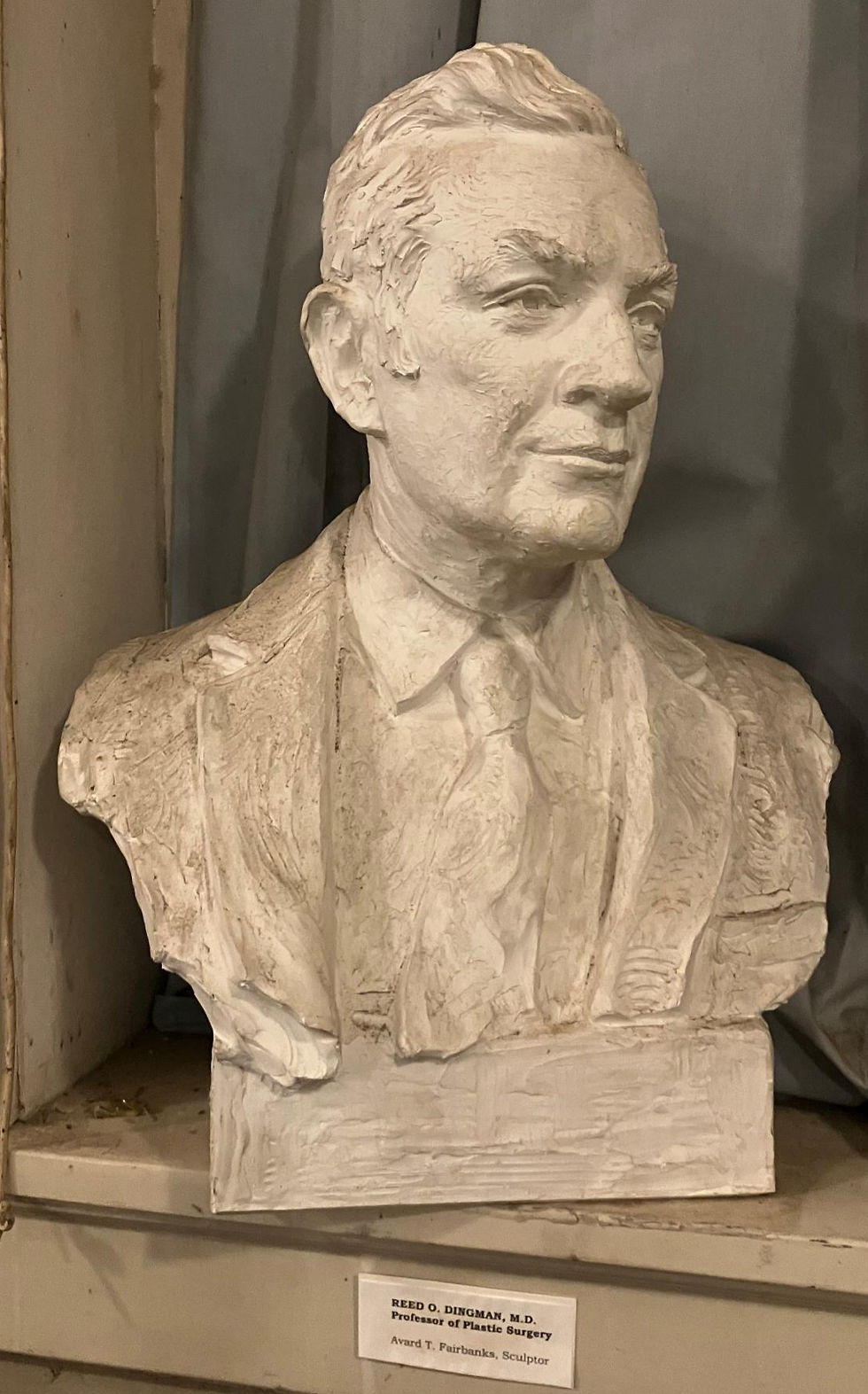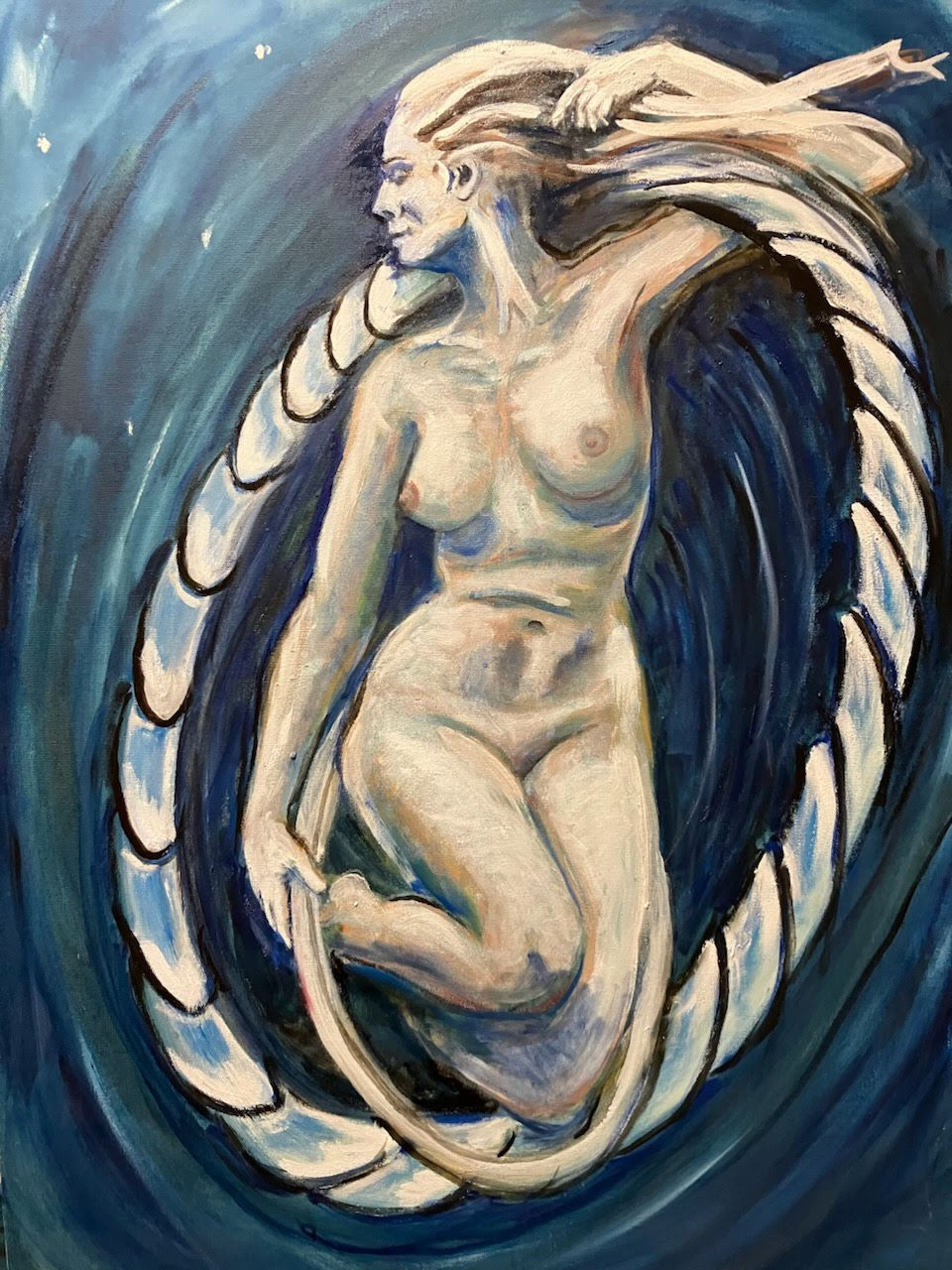AVARD T. FAIRBANKS
Garden and Figure Works
Commemorative Works
Bronze Sculpture Relief Statuary
Sculpture Portraits
Medallic Arts
GRANT R. FAIRBANKS M.D.
Portraits
Landscapes
Sculptures
Painting Copies of Famous Statuary

NEW DEDHAM ART and ANTIQUITIES
And the Avard T. Fairbanks Sculpture Gardens
New Dedham Art was founded with the purpose of honoring sculptor, Avard T. Fairbanks, PhD, by showing his works as well as making available for purchase certain works which can be reproduced from original molds. It also serves to represent other members of the Fairbanks art clan and make such artworks available, as interest occurs in such works. Sculptures are reproduced in bronze castings or marble carvings, and paintings are reproduced as quality giclee reproductions on canvas. The Avard T. Fairbanks Sculpture Gardens, created during the sculptor’s lifetime, unfortunately, did not have a sufficient viewing audience to be meaningful; therefore, many of the subject bronzes were donated to national museums where they will be seen by thousands of people every year. A core collection of the garden and figure studies by Avard T. Fairbanks, including the original plaster castings, have been retained as a nucleus of a private exhibit of his works. Figure studies and statuary suitable for a sculpture gardens display were created by Avard T. Fairbanks, primarily between the years 1926 to 1947, with a few notable exceptions. The human figure is the ultimate object of the artist, whether in painting or sculpture. Dr. Fairbanks became the consummate artist of the human figure. His human anatomy studies at the University of Michigan were facilitated by Dr. Carl G. Huber, M.D., who was Head of Anatomy and Dean of the Graduate School. He was a great supporter of Avard T. Fairbanks and because of him, Avard was able to dissect at least 30 human cadavers and make sculptured anatomic works. Avard wrote his PhD thesis there entitled, “Anatomic Design.” His knowledge of human anatomy and body proportion is clearly evident in his figure studies. His most noteworthy figurative sculptures were created using live models (life drawings and sculpture). When he accepted the Deanship at the University of Utah and organized the College of Fine Arts, he taught many classes including life sculpture to advanced sculpture students. He was credited by a noteworthy art museum director as having “introduced the nude to Utah.” After moving to Utah, many of his most universally admired works, including figure studies, were widely dispersed – “on loan.” However, during the latter part of the sculptor’s lifetime, a major effort was made by his son, Grant R. Fairbanks, M.D., to retrieve the loaned-out sculptures, bring them back together, and provide for restoration of those which had been damaged. As a young man, Dr. Grant R. Fairbanks worked in his father’s studio and one of his jobs was repairing statuary. This talent continued to be useful to ensure that all castings of Avard’s work are the same quality as required by the original artist. When asked to create a female figure of exquisite beauty, equal to that of classical antiquity, Avard T. Fairbanks created the statue called “Aphrodite Awakening,” or the “Birth of Venus,” which was ultimately carved in Georgia white marble. Aphrodite ranks as one of the most beautiful of his figure studies. The life-size marble fountain figure was dedicated on June 3, 1927, behind the home of Carl Washburne, in a pool and garden setting in Eugene, Oregon. Avard Fairbanks was teaching sculpture at the University of Oregon at the time. Although the original life-size plaster model was destroyed by fire, the working model survived, fortunately, and has been restored. In 1928, he accepted a Guggenheim Fellowship to study abroad. In Florence, Italy, he created more exquisite figure studies. The graceful Primavera depicts a radiant youthful female figure in a vertical composition rising amid leaves, fronds, and blossoms in a springtime theme. A 6-foot marble statue of Primavera was carved, and it was supposed to be shipped to the United States prior to World War II. The shipment failed to materialize, and when the sculptor returned to Italy after the war, the marble statue had disappeared. A small working model in terracotta and a study of the head were all that survived of this work. Fortunately, another life-size figure study carved in Italy in 1929 did survive. This is a perfect rendering of a female figure breastfeeding a child in her arms. It was carved in the beautiful cream-colored Seravezza marble. This universally admired work was acquired by the Springville Art Museum in Utah and occupies a prominent place there in the center of a large exhibit room. This work has been re-carved in smaller models in Carrara white marble as well as in Portuguese rose marble. When Avard Fairbanks returned to the United States, he joined the faculty of the University of Michigan in Ann Arbor where he had been offered the position of Professor of Sculpture and Resident Sculptor on Campus. As noted, it was at Michigan that he achieved his PhD Degree in Anatomy. His depth of understanding of human anatomy and his powers of observation are well portrayed in his life-size figure studies of the Michigan period. Two female figures entitled “Rain” and “Nebula” share the theme of natural phenomena metamorphized into human form. While complimentary, they differ in composition and were done using different models. A smaller figure study entitled “Spirt of the Wind” or “Zephyr” also shares the theme of a figure displaying a natural phenomenon. In all of these works, anatomic accuracy is combined with natural beauty, balance, and artistic rhythm. With their adornment of decorative motifs, these works are recognized as expressive of design sensibilities found in the Art-Deco period of American Art. His radiator hood ornament for the 1931 Plymouth automobile shared the Art-Deco theme. It was a winged female figure leading with her breasts and was called “Floating Power.” He created two more automobile hood ornaments, the “Griffin” for the Hudson Terraplane, and the “Ram” for the Dodge, which symbol continues to this day. The “Unfolding” like “Primavera” is a small figure study which recalls the Spring theme. In this work, the arms symbolically represent the petals of a flower opening as if to receive the sunlight. Another work involving the springtime theme is even more decorative; it is entitled “Dalla Terra.” The figure arises centrally out of a radial display of fronds in the front with vertical shoots in the back. One arm is outstretched and the other folded. The figure appears to be arising out of the earth, thus suggesting the title. Two noteworthy mythical animal garden studies include the “Colt Pegasus” riding a cloud which is cast in bronze. It is erected in the center of a pool with water jets at the Meadowbrook Hall of Oakland University, Rochester, Michigan. This was formerly the Dodge-Wilson Estate and was commissioned by the owner at the time, Matilda Wilson. The Ram, which had been previously used for the hood ornament of the Dodge automobile, was subsequently used as the theme of his garden study from classical antiquity called the “Golden Fleece.” The children, Helle and Phrixus, are riding on the back of the Golden Fleece which is flying through the air on a cloud as in Greek Mythology. The gilded casting of the Golden Fleece, which was cast during the sculptor’s lifetime, was donated to Oakland University where it is located not far from the “Colt Pegasus.” Nature’s spiral motif is seen again in a figure entitled “Venus on the Wave,” or “Venere sull’Onda.” Originally made in miniature, it was subsequently enlarged and carved in Bianco Pia Marble. When Dr. Fairbanks accepted the academic position of Dean of the School of Fine Arts at the University of Utah in 1947, the creation of fantasy figure studies, with a few notable exceptions, came to an end. Anatomy continued to occupy a large part of his teaching curriculum, however, and his fantasy figure studies were regularly studied by his sculpture students. These and his anatomical dissection models became basic teaching aids. Two adult nude torsos – male and female – were created in the 1950s to serve as teaching models for the many students who attended his classes. From the late 40s on, monumental and commissioned portrait sculpture occupied most of the sculptor’s creative time. It is of interest, however, that a few additional mythical fantasy studies were created. In 1974, he created the Hawaiian Goddess of Fire, Pele, depicting the writhing female figure as if in a volcanic fiery spew. This work remained in its plastic medium (plasteline) at the time of Avard’s death in 1987. He had also started a figure of a horse leaping into the air – undoubtedly Pegasus. Clay had been added to the armature sufficient to confirm the theme. After some necessary retouching, the Pele model was subsequently cast in plaster and then in bronze. Regarding the “Leaping Horse” armature, the statue was completed by his son, Grant R. Fairbanks, M.D., into the flying horse Pegasus, complete with outstretched wings and its rear hooves barely touching a cloud from which it is ascending. This 4-foot high bronze casting on a 6-foot granite base was erected and dedicated in 2007 in the garden patio of the Pegasus Large Animal Critical Care Center of the Veterinary School of Michigan State University in East Lansing. It remains as an inspiration to those who are concerned or grieving for their large animal’s health as well as a posthumous honor to Sculptor, Avard T. Fairbanks. All of the fantasy and figure studies created by Avard T. Fairbanks have a common appropriateness for display in a garden setting. They represent universal concepts of beauty and anatomic principles of nature’s design. A number of his studies of children and animals also lend themselves well to the garden setting. Balance of form and visual rhythms together with communication of emotion through sculpture’s light and shadow effects became the sculptor’s objectives. Dr. Fairbanks insisted, “For sculpture to be great, it must say something.” Indeed, art in its many forms has been a communication medium throughout the ages. His sculpture, while not photographic, is representational and conveys an unspoken message. In his figure studies, Avard Fairbanks idealized women repeatedly. His female nudes, although elegant, were not sensuous. They became part of a universal design or grand plan, the form of which the sculptor searched and composed throughout his life. Given the individual sculptured work standing alone, and the visual experience the observer feels, the communication between sculptor and viewer transcends time and provides a brief insight into what the sculptor was endeavoring to say.










































































